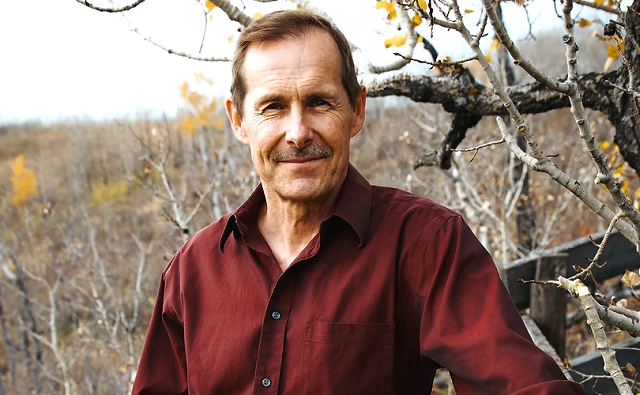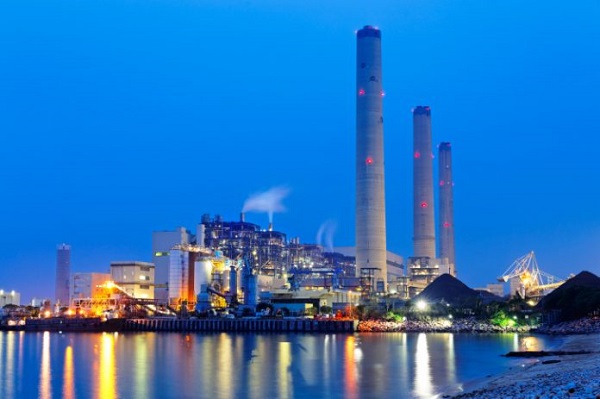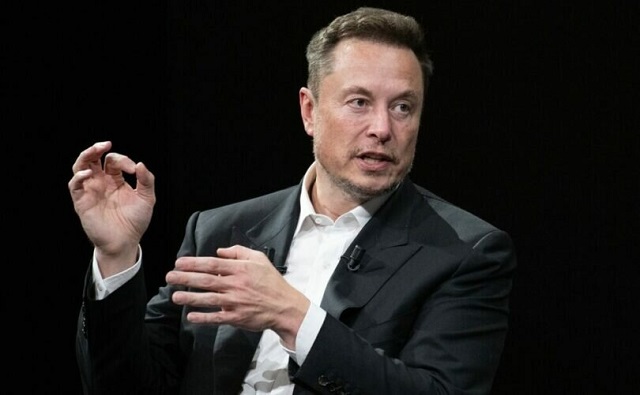Energy
What doubling the grid really means
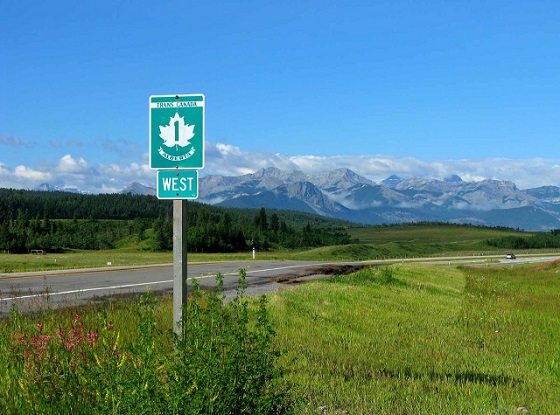
From the Frontier Centre for Public Policy
” imagine if someone said in the next 25 years and 11 months, we must twin every single freeway, highway, grid road, street and alleyway, across the entire country, at the same time. And along the way, we have to replace up to 89 per cent of the existing infrastructure, as well, because it is no longer considered adequate “
Recently my daughter called me while on her way back from a Costco run in Regina, heading home to Weyburn.
She noted that it appears they are twinning the highway between Regina and Weyburn. Indeed, they are, I explained. And several years later, they’ll probably get it all the way to Weyburn. Maybe by the time I retire, if I live that long, they’ll get as far as Estevan.
Indeed, those timelines are likely pretty close to reality, if the twinning of Highway 16, from Saskatoon to Lloydminster, was any indication. I used to drive from Saskatoon to North Battleford to get the newspaper I was working for printed, with road construction for much of that. And it took several more years to complete the Battlefords to Lloydminster portion. I was fortunate enough to be present at the ceremony for that. It was significant enough that Premier Lorne Calvert came out.
Twinning a major highway is a substantial undertaking. Historically, Saskatchewan could usually only afford to work on three separate areas at a time, typically doing 20 kilometres per year in each stretch. That was all the provincial finances could handle.
By adding an additional two lanes, you are effectively doubling the capacity of that major piece of infrastructure. It’s not easy, not cheap, and not fast.
Now imagine if someone said in the next 25 years and 11 months, we must twin every single freeway, highway, grid road, street and alleyway, across the entire country, at the same time. And along the way, we have to replace up to 89 per cent of the existing infrastructure, as well, because it is no longer considered adequate.
You’d probably think they were living in a dreamland, or quite possibly stark raving mad.
And yet this is precisely what the federal government is proposing, nay, demanding, of Canadians from St. Johns to Victoria to Tuktoyaktuk.
In order to save the world from anthropogenic (manmade climate change) and attain a “Net Zero by 2050” economy, we must increase the size of the electrical grid by a factor of 2.5x. And for Saskatchewan and Alberta, who on any given day get up to 88 and 94 per cent of their power, respectively, from fossil fuels, they must also replace that existing gas and coal power generation with non-emitting sources, at the same time as they’re building out the truly massive expansion.
The first reference I saw of the federal Liberal government’s intentions of this was in the 2023 budget, which noted expanding the electrical grid by a factor of 2.2 to 3.4 times. By August, when they released the proposed Clean Electricity Regulations, the government seemed to settle on a factor of 2.5 times for the high demand scenario.
So in the highway twinning example, that would be adding three lanes, not two, to every two lane highway, grid road, street and alleyway. For an existing four lane highway, you would need to add six lanes. For a six lane freeway like Ontario’s 401, you’d need to add an additional nine lanes, finding the right of way space, concrete, rebar, gravel, and asphalt for all of this. Again, all at the same time, in 25 years and 11 months.
There are several thrusts that the federal government is pushing. First, by 2035, they want to totally eliminate gasoline and diesel from new light vehicle sales. There’s currently only eight retail hydrogen fueling stations listed by the federal government and Shell in the entire country. There could be more, but they’re not listed. Realistically this means battery-powered electric vehicles (EVs). But nearly all of those EVs will require charging at home each night (and especially during winter, pre-conditioning those batteries, keeping them warm).
So every residence in the country will require 30 amp chargers for cars, and 80 amp chargers for pickups.
But the government is also now moving away from fossil fuels for home, heating, too. This was indicative of Prime Minister Justin Trudeau’s pause on the carbon tax for home heating oil (primarily used in Atlantic Canada, although I grew up in a house with that system). To do so, the feds are offering “free” installations of heat pumps (which are wholly inadequate at -30 temperatures, let alone the -44 seen in Alberta in mid-January). And those could be up to another 50 amps, per heat pump.
And that’s just residential, never mind commercial or industrial.
The Clean Electricity Regulations are meant to force fossil fuel power generation to go away. And since wind frequently drops to nothing, and the sun goes down every day, the only real alternative is massive expansion of nuclear power across Canada. We’re talking small modular reactors by the dozen in Alberta, Saskatchewan, and to a lesser extent, Nova Scotia and New Brunswick.
On Jan. 30, SaskPower announced a formalized agreement with General Electric-Hitachi for small modular reactors. But when I asked how many they plan on building, the CEO wouldn’t say. But he did speak of increasing the provincial grid from 5,400 megawatt now to 13,000 to 15,000 megawatts.
Hydro Quebec just released their plans to double their grid. Yet, perhaps miraculously, they’re not saying how many, if any, new dams will need to be built.
This doubling of the grid (actually 2.5x, but that’s not easy to say), means we’re going to need not only additional generation, but transmission lines, distribution lines, back alley pedestals, and wiring to every home, business and factory in the country. Where the materials come from? The contractors and workers? Will Not In My Back Yard (NIMBY) be universally trampled on by eminent domain orders, for the good of the planet? Or will it be a continuation of Build Absolutely Nothing Anywhere Near Anything Syndrome (BANANAS)?
A very real example is the Trans Mountain Pipeline. The original was built in something like 16 months, from scratching dirt to oil flowing. The expansion is taking a hell of a lot longer. Work started in 2018, and it is still not done. Any change in the plan had to go back to the Canadian Energy Regulator. Some First Nations fought it every step of the way.
Now do this for every single piece of existing power infrastructure. Wrap your head around that for a minute.
This supposed energy transition, from fossil fuels to electric everything, does not work if you cannot build out the electrical infrastructure, everywhere, and essentially all at in the next 25 years and 11 months. Either the timelines need to be stretched to a generational scale, or more realistically, the whole concept needs to be entirely rethought.
As Saskatchewan Premier Scott Moe has said more than once, “We will not attempt the impossible when it comes to power production.”
Brian Zinchuk is editor and owner of Pipeline Online, and occasional contributor to the Frontier Centre for Public Policy. He can be reached at [email protected].
Energy
Buckle Up for Summer Blackouts: Wind Is Already Failing Texas in Spring
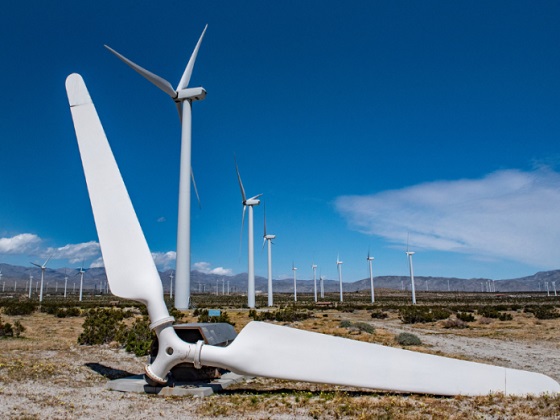
From Heartland Daily News
By Jason Isaac
When the wind blows too much, natural gas plants are forced to shut down because they can’t underbid wind producers that can bid zero or negative. But when the wind doesn’t blow when it is needed, wind generators can afford the loss of revenue because they earn so much from tax subsidies.
It’s been all quiet on the electric grid front for a few months — but don’t get your hopes up. Over the last month, electricity prices came near the $5000/MWh regulatory cap three separate times because the wind wasn’t blowing enough when the sun went down.
If this sounds familiar, you’re not wrong.
You may hear from the drive-by media that the problem is unseasonably warm temperatures, or that there are a lot of power plants down for maintenance. But high 80s in April and low 90s in May are not unusual, and the Texas grid used to manage these weather changes with no problems. From 2014 to 2016, real-time prices only went over $1000/MWh twice, but it’s happened three times already this year.
If the grid is already on shaky ground, with many weeks to go before blistering triple-digit temperatures shoot electric demand through the roof, all signs are pointing to an unpleasant summer.
The problem with the Texas grid is so simple it’s infuriating: Relying too heavily on unpredictable wind and solar, without enough reliable reserve capacity, means higher volatility — leading to higher prices and increasing need for expensive interventions by ERCOT to avoid outages. This is why your electric bill is going up and up even though wind and solar are supposed to be cheap.
While Texas certainly has a lot of sun, peak solar output almost never aligns with peak electric usage. The Lone Star State also has plenty of wind, but wind generation is wildly unpredictable — by nature. It’s not unusual for a wind generator’s output to swing 60 percentage points or more in a single week.
Take last month, for example. On Tuesday, April 16, electricity prices reached their cap because ERCOT’s day-ahead wind forecast was off by 50%. Five gigawatts of wind we were counting on to power Texas as the sun went down didn’t show up. That was the equivalent of simultaneously shutting down 10 large natural gas units, or all of the state’s nuclear capacity. If the latter occurred, the news media would be up in arms (and rightfully so). But because the culprit was the political darling of both the left and the right, no one heard about it.

ERCOT hasn’t been the best at predicting wind output, and the problem isn’t entirely its fault. Wind veers so wildly between extremes it’s nearly impossible to plan a sustainable grid around its fickleness — yet wind makes up 26% of our generating capacity.
It’s all because lucrative tax breaks and subsidies at the state and federal level, combined with flaws in ERCOT’s market design, make it almost impossible for wind to lose money — and harder than ever for natural gas to compete, even though it’s far more reliable and affordable. When the wind blows too much, natural gas plants are forced to shut down because they can’t underbid wind producers that can bid zero or negative. But when the wind doesn’t blow when it is needed, wind generators can afford the loss of revenue because they earn so much from tax subsidies.
Imagine trying to open a restaurant when your competitor next door is paying its customers to eat there. It’s no wonder natural gas capacity in ERCOT has barely grown over the past decade, and not enough to make up for losses of coal plants, while demand has been steadily increasing.
All those subsidies are hurting our most reliable, affordable energy producers and putting our economy at risk — leaving you and me, the taxpayers on the hook.
While most political issues are far more complex and nuanced than brazen attack ads and headlines would lead you to believe, in this case, it really does boil down to one simple problem.
And it would be easy to solve — if lawmakers are willing to go against the grain of political correctness and set a clear reliability standard for the wind and solar generators that want to connect to our grid.
Unfortunately, that’s a gargantuan “if.”
As a former lawmaker, I understand the pressures our legislators are under to toe the line on alternative energy. Major utilities embracing World Economic Forum- and United Nations-aligned “energy transition” policies that seek to redefine what’s “clean” and what’s “pollution” are making matters worse. And the incessant misinformation from their well-funded lobby that promise rural “economic development” and “cheap energy” sound too good to be true, because they are.
Elected officials don’t serve the lobby. They serve Texans — or, at least, they should.
And Texans want a reliable, affordable grid. They want to not have to worry about losing power in the heat of the summer or the dead of winter. The Legislature must put a stop to these market-distorting subsidies and make reliability, not popularity, the priority for our electric grid.
Gov. Greg Abbott sent a letter on July 6, 2021 to members of the Public Utility Commission of Texas (PUC) directing them to “take immediate action to improve electric reliability across the state.” The second directive was to “Allocate reliability costs to generation resources that cannot guarantee their own availability, such as wind or solar power.” Unfortunately, the PUC hasn’t acted on this directive or even studied it. The costs of scarcity on the grid are estimated to have exceeded $12B in 2023, which is equal to two-thirds of the property tax relief passed in the 88th Legislature, all paid for by ratepayers.
“Unfortunately for Texans, the ERCOT grid is moving from a single grid with gas and coal power plants running efficiently all day to two grids: one for wind and solar and one for expensive backup power that fills in the gaps when there is not enough wind and sun,” says Dr. Brent Bennett, policy director for Life:Powered at the Texas Public Policy Foundation. “Every time these scarcity events occur, whether due to real scarcity or artificial scarcity created by ERCOT’s operating policies, ratepayers are shelling out tens to hundreds of millions of dollars for backup power. It is the most expensive way to operate a grid, and Texans will feel the bite as these costs are absorbed over time.”
The Californication of our grid is unfolding before our eyes. If the Legislature and the PUC don’t act fast, the Texas miracle won’t last.
The Honorable Jason Isaac is CEO of the American Energy Institute and a senior fellow at the Texas Public Policy Foundation. He previously served four terms in the Texas House of Representatives
Energy
Federal government continues to reject golden opportunities to export LNG
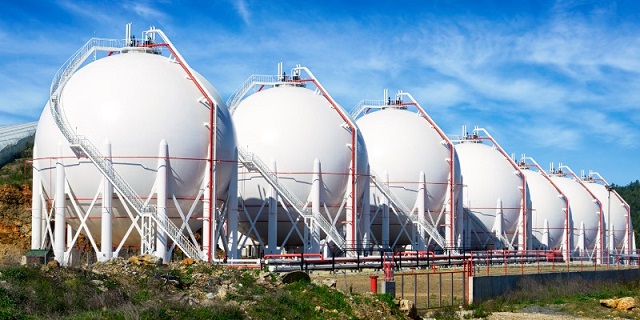
From the Fraser Institute
By Julio Mejía and Elmira Aliakbari
A recent report released by the National Bank of Canada underscores the potential environmental impact of transitioning from coal to natural gas in countries such as India. According to the report, by 2030 the cumulative effect of this transition would result in up to four times fewer greenhouse gases emissions than what Canada emitted in 2021.
Once again, Canada has missed a crucial opportunity to supply clean and reliable energy to an ally. Polish President Andrzej Duda recently expressed interest in purchasing Canadian liquefied natural gas (LNG) from Canada but the Trudeau government did not offer any concrete commitment in response. We’ve seen this movie before.
During his recent visit to Ottawa, Greek Prime Minister Kyriakos Mitsotakis received the same noncommitment. In January 2023, Japanese Prime Minister Fumio Kishida came to Canada hoping to secure a reliable energy source. In response, Trudeau expressed the importance of Canada as a global energy supplier, only to add the disclaimer that the world is “aggressively” moving towards decarbonization. And in 2022, after Putin’s invasion of Ukraine led Germany to seek ways to reduce its reliance on Russian energy sources, German Chancellor Olaf Scholz asked to buy Canadian LNG but the prime minister gave him the cold shoulder. Apparently, Trudeau found no compelling “business case” to export LNG to Europe’s largest economy.
Of course, Canada’s vast natural resources could make a significant positive impact on global energy security, reliability and emissions reduction by reducing reliance on coal while also creating jobs and economic opportunity here at home. Energy supply shortages have already forced European countries to revert to coal-fired power plants—coal contributes more CO2 emissions per unit of energy than natural gas. In the developing world, India aims to double coal production by 2030 to meet the demands of its burgeoning economy and population. Similarly, China quadrupled the amount of new coal power in 2022 and has six times as many plants under construction as the rest of the world combined.
A recent report released by the National Bank of Canada underscores the potential environmental impact of transitioning from coal to natural gas in countries such as India. According to the report, by 2030 the cumulative effect of this transition would result in up to four times fewer greenhouse gases emissions than what Canada emitted in 2021. To put that in perspective, the impact would be even bigger than completely shutting down the Canadian economy.
Moreover, a recent McKinsey report anticipates an annual increase in global LNG demand of 1.5 per cent to 3 per cent by 2035. And according to the latest report by the International Energy Agency (IEA), limited new LNG production means supply will remain tight. The Biden administration recently halted LNG project approvals, increasing the need for Canada to establish its own infrastructure if we’re to seize the opportunity and become a global LNG supplier.
Unfortunately, Canada currently has no operational LNG export terminals, with the first LNG facility expected to commence exporting by 2025. The Trudeau government has frustrated the development of other LNG terminals, primarily through government regulatory barriers including long approval timelines. The government’s emissions caps on the oil and gas sector and federal Bill C-69 (which added more red tape and complexity to the assessment process for major energy projects) have also created uncertainty and deterred—if not outright prohibited—investment in the sector. Additionally, the British Columbia government’s “CleanBC” plan to reduce greenhouse gas emissions has added more regulation. Not surprisingly, a recent survey revealed that investors identify regulatory uncertainty as a major deterrent to investment in Canada’s oil and gas sector.
With the proper polices in place, Canada could provide an energy alternative to our allies and other coal-consuming countries worldwide. The Trudeau government should acknowledge the environmental benefits of our natural gas resources, reform regulations for energy infrastructure projects so they’re more competitive, and allow our energy industry to be a leading source of clean and reliable energy, for the benefit of Canadians and the environment.
Authors:
-

 Brownstone Institute18 hours ago
Brownstone Institute18 hours agoMedical Elites’ Disgrace Over Ivermectin
-

 Bruce Dowbiggin1 day ago
Bruce Dowbiggin1 day agoGetting Real About Justin’s Real Estate Economy. It Won’t Last
-

 COVID-192 days ago
COVID-192 days agoKenyan doctor: WHO pandemic treaty aims to ‘maim and kill’ and ‘establish a one-world government’
-
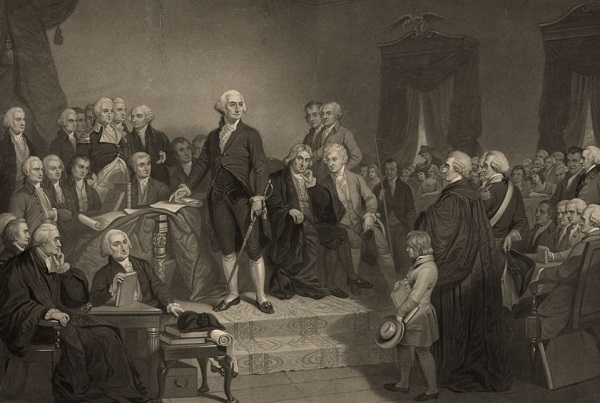
 Opinion18 hours ago
Opinion18 hours agoThe American Experiment Has Gone Down In Flames
-

 conflict10 hours ago
conflict10 hours ago‘It Makes No Sense’: Experts Puzzled By Biden Admin’s Claim That Rafah Invasion Wouldn’t Help Israel Defeat Hamas
-

 COVID-199 hours ago
COVID-199 hours agoThe New York Times Admits Injuries from COVID-19 Shots
-
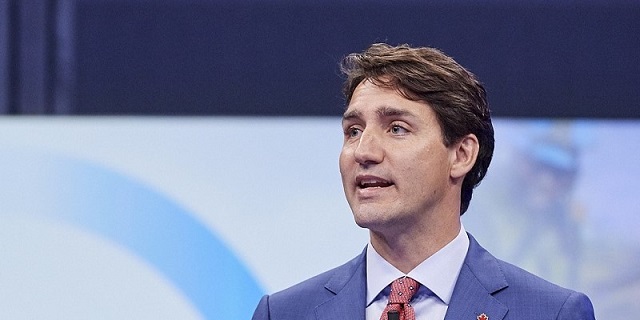
 Automotive2 days ago
Automotive2 days agoElectric vehicle mandates mean misery all around
-

 Energy7 hours ago
Energy7 hours agoFederal government continues to reject golden opportunities to export LNG



